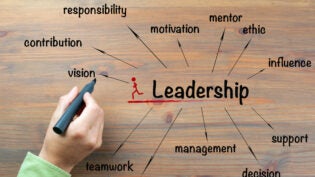
Bringing new team members into a project is exciting and challenging for management. An effective onboarding process helps new hires integrate, understand their responsibilities, and contribute to the team’s success. Explore helpful tips for onboarding new team members into projects and create a welcoming and productive onboarding experience.
Importance of a Structured Onboarding Process
A structured onboarding process can help you set up new team members for success. It ensures they receive consistent information and support, significantly impacting their productivity and job satisfaction.
The swift integration and welcoming atmosphere help new team members hit the ground running and improve efficiency. Invest time into developing a clear onboarding plan to create a cohesive and efficient team environment right from the start.
Key Components of Effective Onboarding
Effective onboarding goes beyond paperwork and office tours. It involves a mix of training, mentoring, and social integration. Key components should include an introduction to company culture, clear role expectations, and providing access to necessary resources.
Many staff augmentation services for businesses focus on the same factors, ensuring their professionals smoothly transition into operations. Assigning a mentor or buddy for the first few weeks makes new hires feel supported and more comfortable when asking questions or seeking guidance.
Tips for Building a Welcoming Environment
 Creating a welcoming environment starts before the new hire’s first day. Send a personalized welcome email, including introductions to the team.
Creating a welcoming environment starts before the new hire’s first day. Send a personalized welcome email, including introductions to the team.
Ensure the new team member’s workspace is ready with essential tools upon their arrival. Encourage team lunches or virtual meet-and-greets to foster camaraderie and immediately help new members feel like part of the team.
Leveraging Technology for Seamless Onboarding
Technology is a significant tool for streamlining the onboarding process. Digital tools, such as learning management systems (LMS), deliver training materials and track progress.
Collaboration platforms, such as Slack or Microsoft Teams, facilitate communication and provide important resources and information. Automating repetitive tasks, such as document signing or IT setup, allows team leaders to focus on personalized interactions with new hires.
The Role of Feedback and Evaluation
Feedback and evaluation are critical components of successful onboarding. Set regular check-ins to discuss progress, address concerns, and gather feedback on the onboarding experience.
This dialogue can help you identify areas for improvement and demonstrate your commitment to supporting your newest team members. It also encourages a culture of open communication, leading to higher engagement and job satisfaction.
Effectively onboarding new team members into your projects sets the stage for efficient teamwork. Implement these tips to foster a positive onboarding experience that smoothly integrates new hires and maximizes their potential. Improve your current practices to ensure the next member to join feels welcomed.
951 Views












